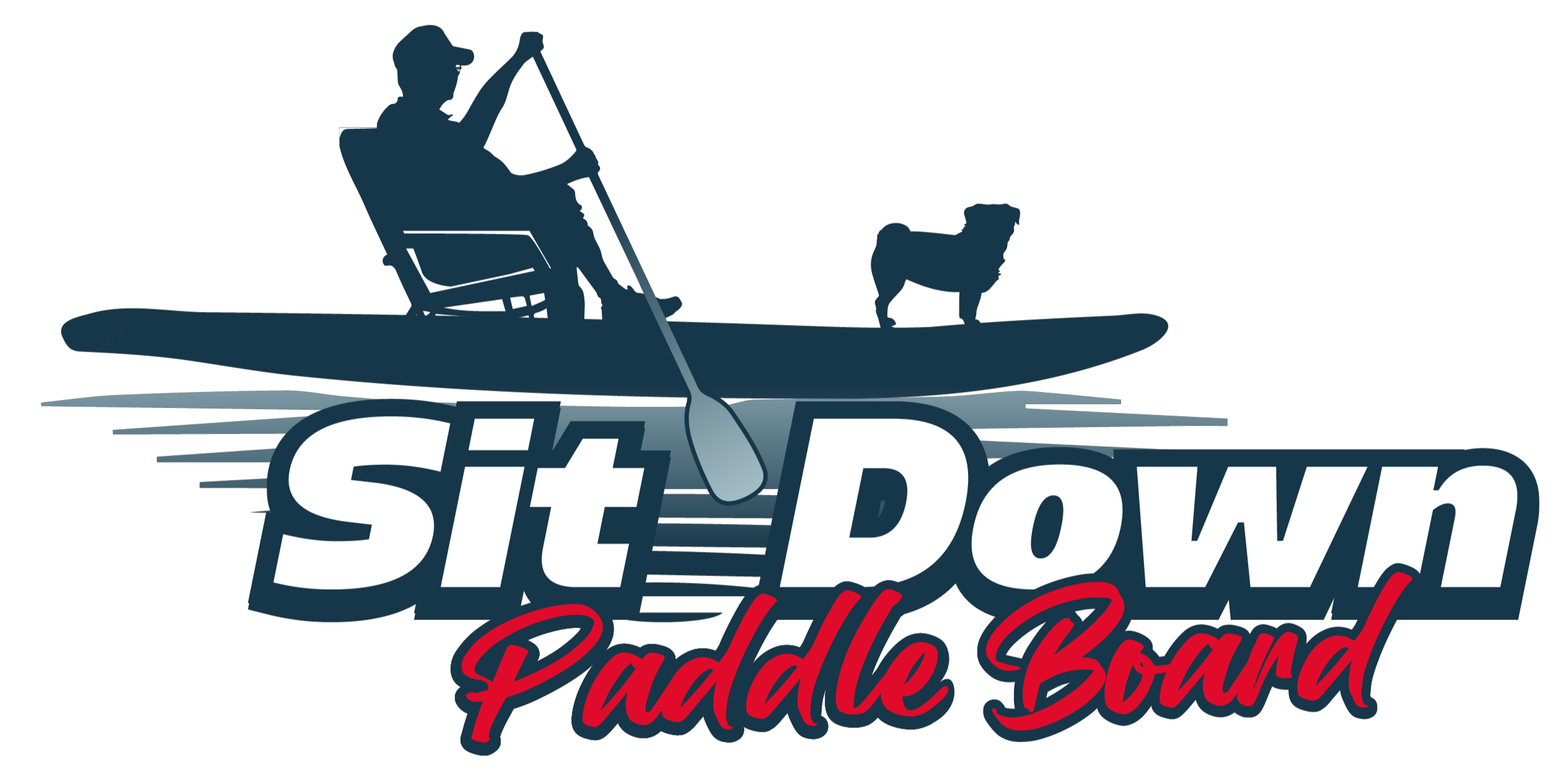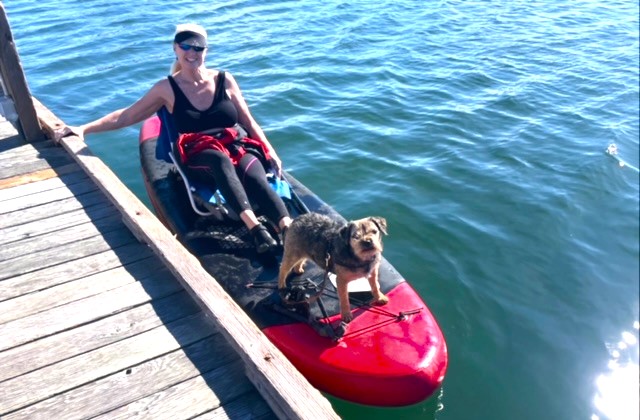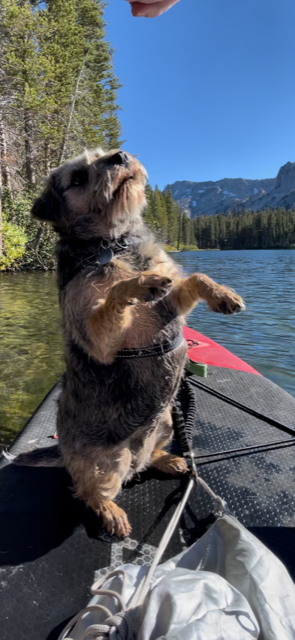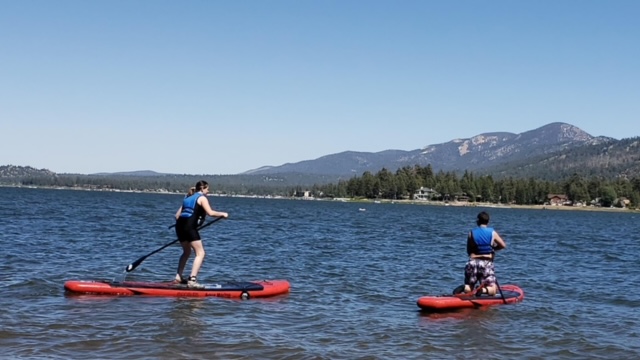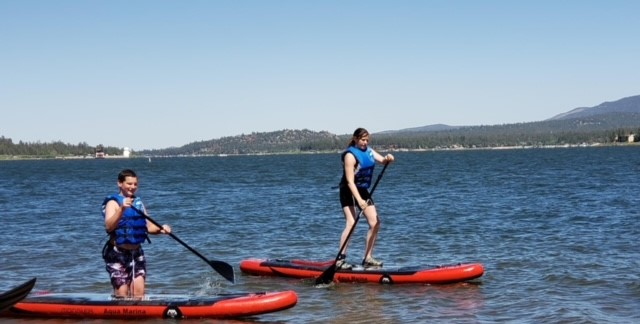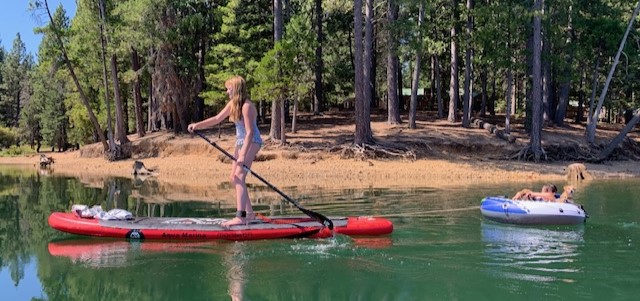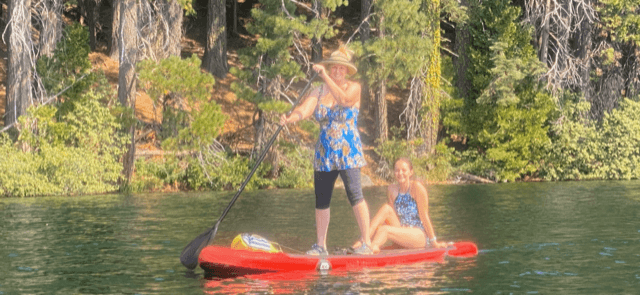What to Wear Paddle Boarding
Are you wondering what to wear paddle boarding? Here is a checklist of six essential items you don’t want to forget. We created this list for ourselves because it really helps to have a checklist for what to wear paddleboarding so you don’t forget anything important. Whether you are a new paddler looking to cover the basics or an experienced paddler looking for things to help improve their paddling experience, we have you covered.
Be sure to Print out or Screen Shot the Checklist at the bottom of this article!
What to Wear Paddle Boarding- The 6 Essentials
Here are the six things you should always bring with you or at least consider for a day out on the water on a paddle board.
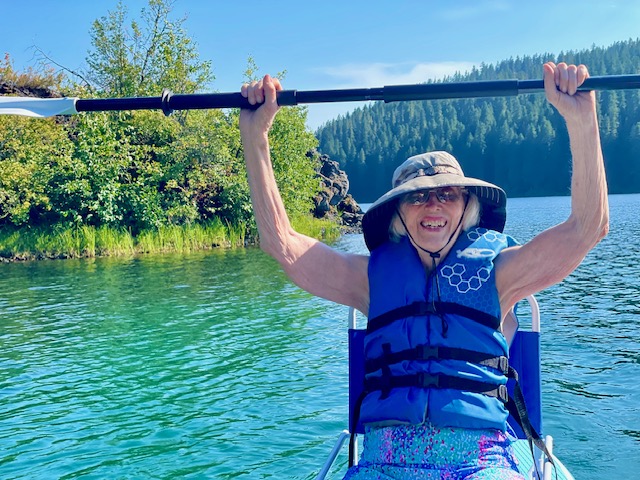
Personal Flotation Device (PFD)
Safety should be a priority when paddleboarding. A PFD is essential, especially in deep water or if you're not a confident swimmer. It's also legally required in some areas. The pro of wearing a PFD is the enhanced safety it provides. The major con is that it may feel bulky or restrictive, but many designs are compact and specifically made for watersports.
For example, Julie recently chose to wear her life jacket while paddling on Mission Bay on a particularly windy day during a riptide. She had Silli dog on her paddle board with her and she was concerned that the patch over a large hole the kids had made in her favorite paddle board would become compromised in the sea water and she wanted her life jacket on for the extra buoyancy so that she could hold Silli dog above water as well as hold onto her gear should her inflatable paddle board deflate suddenly.
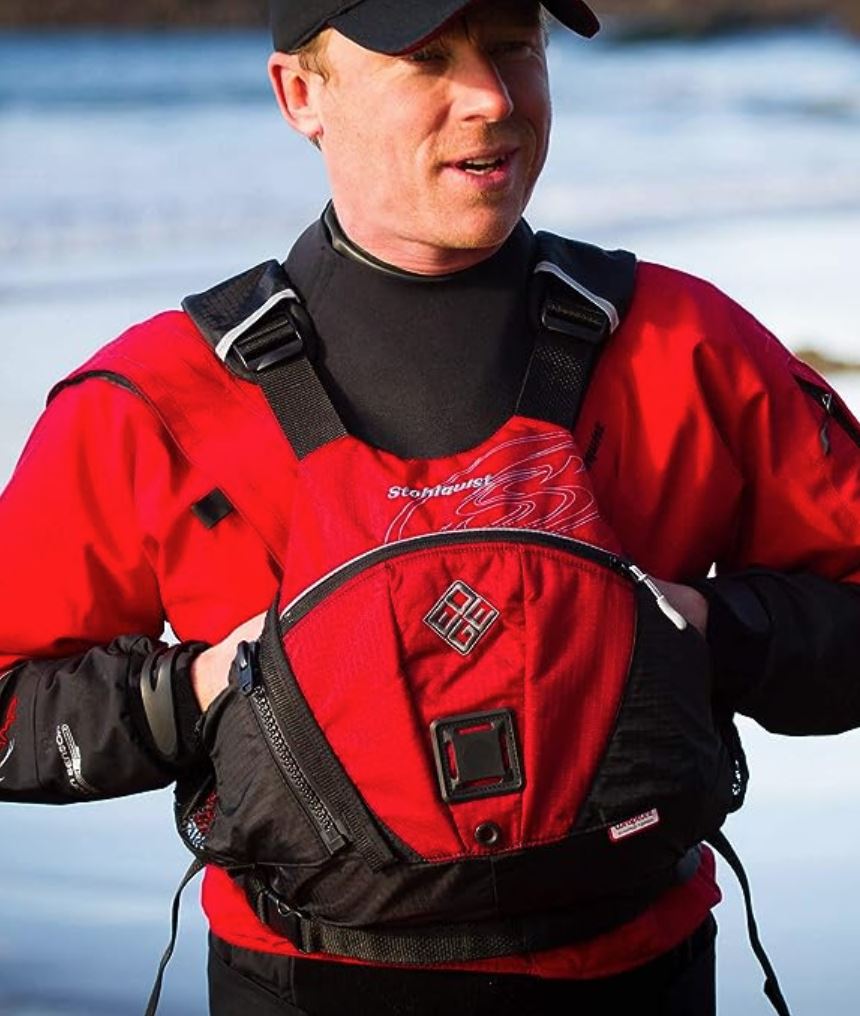 Nice Paddle Jacket and Life Vest Combination
Nice Paddle Jacket and Life Vest CombinationSuitable Clothing
What you wear depends on the water and weather conditions.
In warm weather, opt for a swimsuit or exercise-wear, preferably made of quick-dry, breathable material like nylon and polyester. Cotton can absorb a ton of water causing it to get heavy and takes forever to dry so we avoid it unless it is going to be very hot in which case we will wear a snug fitting long sleeve cotton t-shirt (over a swim suit top for girls) and we will wet it down on purpose to keep cool. Even on warm days we will often bring a wind breaker if we plan on being out during the afternoon or evening since the wind can kick up in later in the day and a hot day can get cold quickly. A lightweight wind breaker mado out of polyester or nylon will keep you warm and can easily be tied to your chair, worn tied around your waist or stowed securely in a dry bag with drinks and food.
In colder conditions, consider wearing a wetsuit or drysuit to maintain body temperature and prevent hypothermia.
Since we usually paddle sitting down in our folding beach chairs on our paddle boards during the winter and we rarely fall into the water even when we paddle standing, we typically wear neoprene tights, either short or long depending on the weather along with a paddle jacket over our swimsuit top or a fleece top during the winter.
The fleece keeps you warm and does not absorb water. The paddle jacket is just a wind breaker with a lot of room to move in the arms to lower wind chill. We like to wear the two together since the fleece is an insulation layer and the jacket is windproof and together the provide us the greatest number of options to keep ourselves at a comfortable temperature while also being comfortable to wear.
We rarely wear a full wetsuit since neoprene can cause chafing on the shoulders and around the armpits when you are paddling. However, if you plan to paddle standing up and it is a cold day or you are going to be out on the ocean, you may want to wear a full wetsuit with a paddle jacket over it. Since we aren’t into ice fishing and often have to stop to go to the bathroom we rarely wear a drysuit. If you are planning to go out and paddle standing up during extremely cold weather or when the water is extremely cold and you will be far from shore, you may want to consider one.
Bottom line, when considering what to wear paddle boarding, its easy... dress for the conditions so you can easily regulate your temperature, stay comfortable most importantly, have an enjoyable time out on the water.

Footwear
When considering what to wear paddle boarding, people often overlook the importance of footwear. Water shoes or sandals with grip can protect your feet from sharp objects or rocky ground while getting in or out of the water. Barefoot paddleboarding is also common for better balance and grip on the board. The choice between footwear or bare feet depends largely on personal preference, water temperature, the likelihood or encountering sharp objects either on or off of your board, and terrain.
We like to wear either river sandals (Keens) when it is hot or neoprene booties when it is cold. If we feel like going barefoot once we are on our board and out in the water, there is nothing to stop us from taking our shoes off and stowing them attached the bungies while we are out on the water. Meanwhile they will be there, ready for us to use again if necessary for bio breaks, to explore islands in the middle of a lake, to go on short hikes during our adventures and for when we stop for lunch. Plus, they are there when we need them to wear while we are carrying our boards back to the car at the end of the day.
Leash
When thinking about what to wear paddle boarding, people often forget their leash! A paddleboard leash ties around your ankle and connects you to your board. If you fall off, your board will stay close, serving as a large floatation device. Wearing a leash is vital in all conditions but particularly in rough water or offshore winds where you could potentially be separated from your board. The benefits are obvious in terms of safety. One possible con is that it could potentially get tangled or feel like it restricts movement, but most users get accustomed to it quickly.
Since we paddle board sitting down a lot when it is very unlikely that you will fall off, we will often attach our leash to our folding chair so that we don’t lose it should we tip over while paddle boarding in surf or in rapids. You tend to stay a lot closer to your board when you fall off from a seated position than when you fall from a standing position.
Sun Protection
A hat, sunglasses, and waterproof sunscreen are important for protecting against sunburn and glare, especially in sunny weather. Consider straps for sunglasses so they aren't lost in the water.
- John’s go-to hat for paddle boarding is usually a baseball cap or a nylon and mesh sun hat.
- Julie prefers her neoprene visor or a nylon and mesh sun hat.
If is going to be windy and cold consider wearing a fleece hat or a fleece ear band to keep your head warm and prevent your ears from hurting.
Gloves
In cold weather conditions, gloves especially designed for watersports can protect your hands from getting cold and ensure a better grip on the paddle. They're not generally needed in warmer weather unless you are planning a particularly long paddle and are worried about blisters. In that case, you should consider bringing a lightweight set of paddling gloves.
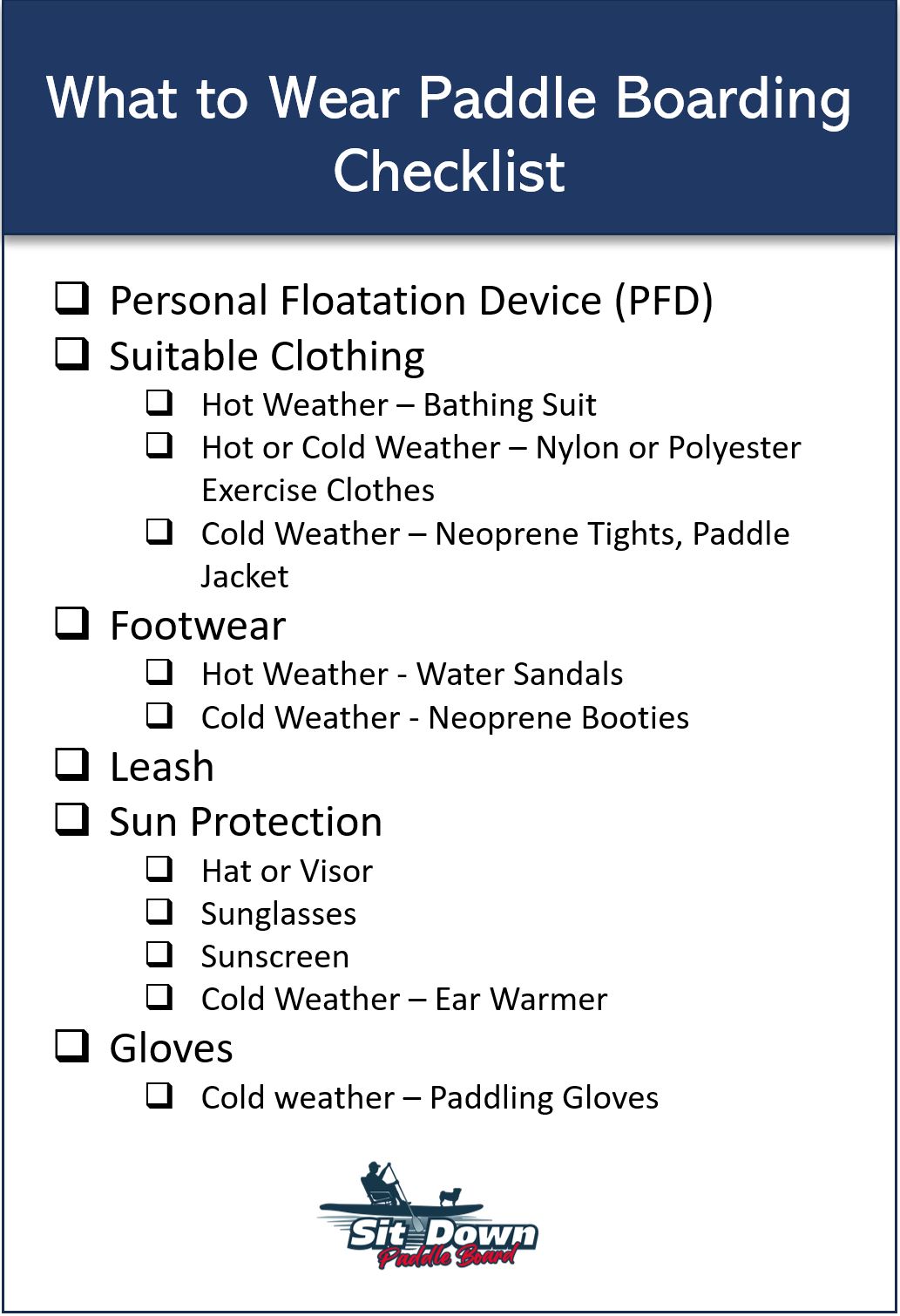
When considering what to wear paddle boarding, remember, comfort, safety, and weather conditions dictate what is appropriate to wear while paddleboarding. Always prioritize safety gear like a PFD and leash, and dress according to the weather and water conditions.
Now you know what to wear, check out our webpage about What to Bring Paddle Boarding and print out that checklist as well!
We hope to see you out on the water!
